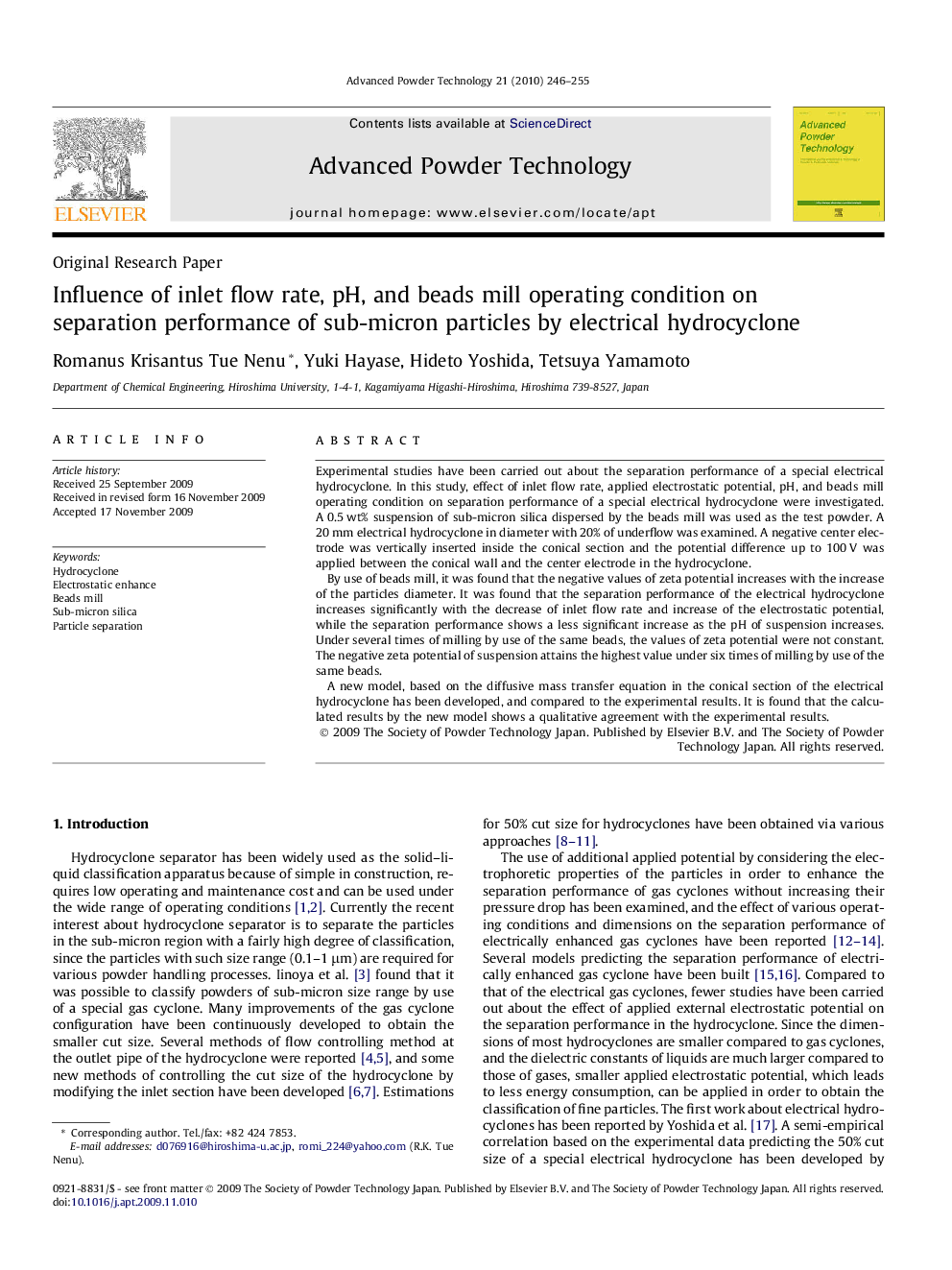| Article ID | Journal | Published Year | Pages | File Type |
|---|---|---|---|---|
| 144532 | Advanced Powder Technology | 2010 | 10 Pages |
Experimental studies have been carried out about the separation performance of a special electrical hydrocyclone. In this study, effect of inlet flow rate, applied electrostatic potential, pH, and beads mill operating condition on separation performance of a special electrical hydrocyclone were investigated. A 0.5 wt% suspension of sub-micron silica dispersed by the beads mill was used as the test powder. A 20 mm electrical hydrocyclone in diameter with 20% of underflow was examined. A negative center electrode was vertically inserted inside the conical section and the potential difference up to 100 V was applied between the conical wall and the center electrode in the hydrocyclone.By use of beads mill, it was found that the negative values of zeta potential increases with the increase of the particles diameter. It was found that the separation performance of the electrical hydrocyclone increases significantly with the decrease of inlet flow rate and increase of the electrostatic potential, while the separation performance shows a less significant increase as the pH of suspension increases. Under several times of milling by use of the same beads, the values of zeta potential were not constant. The negative zeta potential of suspension attains the highest value under six times of milling by use of the same beads.A new model, based on the diffusive mass transfer equation in the conical section of the electrical hydrocyclone has been developed, and compared to the experimental results. It is found that the calculated results by the new model shows a qualitative agreement with the experimental results.
